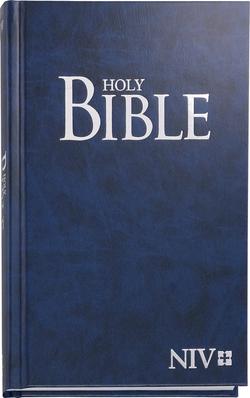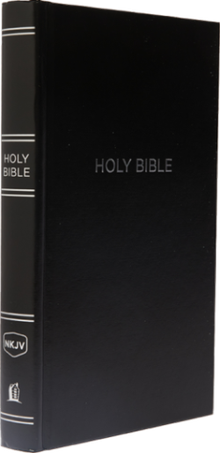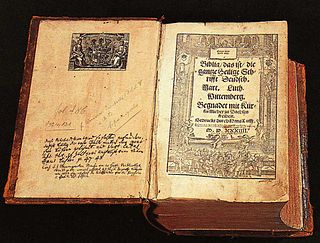Partial translations
In 1847 Bishop Joaquim de Nossa Senhora de Nazaré published in São Luís, Maranhão, Brazil a translation of the New Testament based on the Vulgate.
At the end of the 19th century, in Portugal Father António Ribeiro dos Santos translated the Gospels of Matthew and Mark from the Vulgate.
A translation of the Psalms by F.R. dos Santos Saraiva appear in 1898 under the title Harpa de Israel (Harp of Israel).
Duarte Leopoldo e Silva published a translation of the Gospels in the form of a harmony. A translation of the Gospels and the Acts of the Apostles by a priest of the College of the Immaculate Conception, Botafogo appeared in 1904. 1909 saw publication of work by Franciscan friars, and of a translation by Father Santana of the Gospel of Matthew directly from the Greek language.
The New Testament in a translation from the Vulgate by J.L. Assunção appeared in 1917 and a translation of the Psalms by J. Basílio Pereira in 1923.
Huberto Rohden published a translation of the New Testament in 1930.
Rabbi Meir Matzliah Melamed published in 1962 a translation of the Torah under the title A Lei de Moisés e as Haftarot. A revised edition appeared in 2001 as A Lei de Moisés.
Baptist Minister Fridolin Janzen published in 2005 a translation of the New Testament based on the Textus Receptus. [9]
Adolfo Wasserman's translation of the Living Torah, under the title of A Torah Viva appeared in 2001. A translation by David Gorodovits and Jairo Fridlin of the Hebrew Bible (the Tanakh) was published in 2006.
Complete translations
In the middle of the 18th century, Pedro Rahmeyer, a native of Hamburg who had been living in Lisbon for 30 years, made a translation of the Bible, presumably from German, into Portuguese. It has never been published. The manuscript is in the Senate Museum in Hamburg. [10]
At the start of the 20th century, the Brazilian Translation (Tradução Brasileira) was produced, with assistance from the American Bible Society, by members of various Protestant denominations, including H. C. Tucker (Methodist), William Cabell Brown (Episcopalian), Eduardo Carlos Pereira (Presbyterian). The Gospels of Matthew and Mark appeared in 1904. A revision of Matthew was published in 1905. The four Gospels and the Acts of the Apostles appeared in 1906 and the whole of the New Testament in 1910. Finally the whole Bible, without the deuterocanonical books, came in 1917. It stayed rather close to the original texts, which in the eyes of people accustomed to the Almeida Version was a drawback. Another difficulty was its abandonment of the traditional Portuguese form of the Old Testament names, which were replaced by form closer to the Hebrew original, as in English.
In 1932–1942, a translation by Father Mathos Soares, based relatively freely on the Vulgate, was published by Edições Paulinas. [8] It became the most popular version in Brazil.
In 1958, the Ave Maria publishing house in São Paulo produced a complete Bible based on the French version of the Benedictine monks of Maredsous Abbey, Belgium. The Franciscan João José Pedreira de Castro, of the São Paulo Bible Centre, was the coordinator of the work of producing the Portuguese version.
In 1967, Edições Paulinas presented a complete Bible in Portuguese adapted from the Italian version of the Pontifical Biblical Institute in Rome.
A joint group of Portuguese Catholics and Protestants began publication of the Tradução Interconfessional em Português Corrente in 1972. A revised edition appeared in 2002.
A Portuguese edition of the Jerusalem Bible, with notes and commentaries translated from the French edition but, as in the English edition, with the text translated directly from the original languages, was published in 1981. A revised edition, known as the Nova Bíblia de Jerusalém (cf. New Jerusalem Bible) appeared in 2002.
A commission led by the Franciscan Ludovico Garmus produced in 1982 a complete Bible, published by Vozes, and another translation was provided by the Santuário publishing house in the same year.
In 1983, Edições Loyola published the Bíblia Mensagem de Deus (Message of God Bible). [8]
1988 saw publication of A Bíblia na Linguagem de Hoje (The Bible in Today's Language), which was criticized as departing too far from the original text. As a result of these criticisms, it underwent a lengthy revision, leading to the appearance of the Nova Tradução na Linguagem de Hoje (New Version in Today's Language) without the deuterocanonical books in 2000, and including them in 2003. [8]
The Edição Pastoral (Pastoral Edition) of 1990, coordinated by Ivo Storniolo, was associated with the liberation theology movement. Its use was widespread enough to inspire a group of Biblical scholars to undertake a complete translation, based on but revising the translation of the passages included in the Lectionary for Mass. This translation was published in 2001 under the auspices of the Conferência Nacional dos Bispos do Brasil, the Brazilian bishops conference, and published by a consortium of seven publishing houses. It soon went through several printings, with revisions of the notes and diagrams. [8]
In 1997, a commission comprising Catholics, Protestants and Jews produced the Tradução Ecumênica da Bíblia (Ecumenical Version), based on the French Traduction œcuménique de la Bible, [8] with the Old Testament presented as in Jewish Bibles.
2001 also saw the publication of the New International Version in Portuguese (Nova Versão Internacional), the New Testament of which appeared in 1983. [8]
The Bíblia do Peregrino (Pilgrim's Bible), translated from the Spanish by Luís Alonso Schökel, appeared in 2002.











